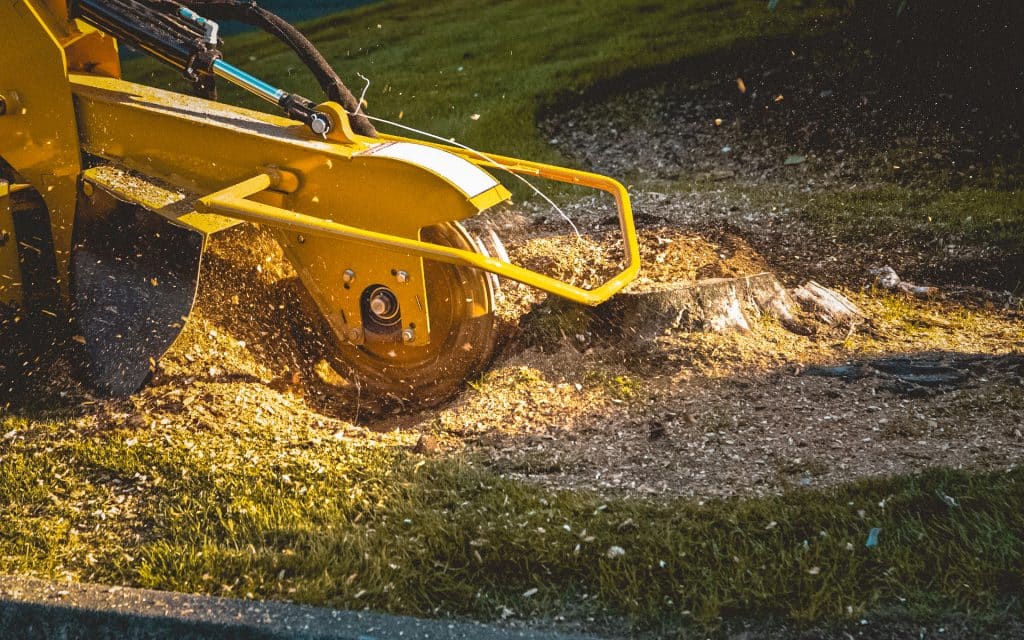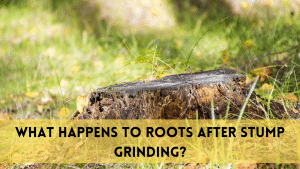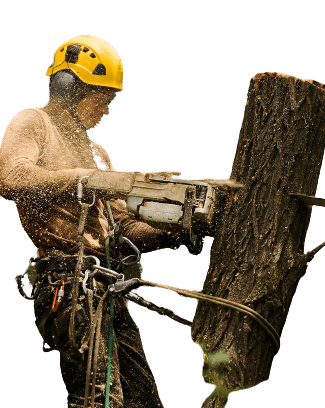How to Remove Tree Roots from Lawn?
When invasive tree roots invade your lovely green grass, it may become annoying and destructive. Tree roots naturally seek moisture and nutrients, which may cause several problems on your grass. These roots may damage lawn equipment and uneven surfaces, disrupting tree-lawn harmony. In this blog you will be able to learn about How to Remove Tree Roots from Lawn?
Root Removal Importance
Ignoring tree roots in your yard is impossible. These roots are tenacious and harmful. Left uncontrolled, they can:
Tripping Hazards: Raised tree roots may provide safety hazards in walking and playing areas.
Interfere with grass Maintenance: Mowing, edging, and grass maintenance are difficult near tree roots.
Compete for Resources: Tree roots drain nutrients and water from lawn vegetation, causing brown patches and an unhealthy lawn.
Damage Utilities: Tree roots may damage subterranean pipelines and sewage systems.
Weak Trees: Ironically, unmanaged tree roots may weaken their host trees and cause falling dangers.
Overview of Tree Root Removal Steps
This complete instruction will help you safely and successfully remove tree roots from your lawn. We’ll teach you how to handle little roots from a young tree or large roots from a mature one.
You’ll learn how to spot root invasion, choose a removal strategy, and limit grass and landscaping damage. We’ll also discuss grass care to keep it healthy and root-free.
After reading this book, you’ll be able to revive your lawn and create a beautiful, safe, and healthy outdoor place for your family and friends. Let’s start the root-free grass trip!
Tree Root Knowledge
Tree Root Types and Lawn Impact
Surface Roots: Some trees produce surface roots near the topsoil. These roots may disturb grass, produce lumps, and make mowing difficult.
Others, especially huge hardwoods, have extensive taproots that reach deep into the earth. These roots may not immediately impact your lawn’s surface, but they might compete for nutrients and water, weakening it.
Shallow Roots: Some trees have horizontal, shallow root systems. These roots may cause grass issues by seeking moisture.
The Signs of Tree Root Damage to Your Lawn
Early detection of tree root invasion is critical. Common signs of tree roots in your lawn:
Raised Soil: Mounds in your grass may indicate tree roots.
Roots may produce humps or depressions in your grass as they develop.
Root competition for nutrients may cause thin or discolored grass.
The pressure of tree roots may break pavement or ruin driveways near their growing area.
Slow Drainage: Roots may obstruct yard drainage systems.
Identifying the Root Tree
Effective root removal requires identifying the root-causing tree. How to find the culprit:
Location: Find nearby trees and trouble spots in your yard. The tree responsible is usually nearby.
Leaves and Bark: Check the afflicted area’s trees’ leaves, bark, and look. Identify the species by its unique traits.
If you’re not sure which tree is causing the problem, see an arborist. Professional assessments may help you make an educated selection.
Understanding the sorts of roots you have and identifying the issue tree can help you choose the best root removal procedure and limit grass damage. We’ll discuss successful tree root removal procedures in the next sections.
Safety and Preparation
Gathering Tools and Equipment
Before removing tree roots from your lawn, you need the correct tools and equipment. You may need these items:
A strong, sharp-edged shovel is your main instrument for digging and chopping roots.
Root Saw or Pruners: For thicker roots that are hard to shovel.
Mattock or pickaxe: Breaks apart compacted dirt and tough roots.
Protective Gear: Safety first. Gloves, goggles, and sturdy work boots protect you from risks.
Safety Barriers: Use safety barriers while utilizing heavy equipment to avoid accidents.
Rope or chains: For root removal or equipment connection.
Wheelbarrow or Tarp: To remove excavated dirt and trash.
Safety Flags or Cones: To designate the workplace and warn of risks.
Before excavating, use a utility finding service to label subterranean utilities.
Security for Root Removal
Working with tree roots is strenuous and risky. Take these steps during root removal to be safe:
Wear gloves, goggles, and strong work boots to protect your hands, eyes, and feet.
Stay Hydrated: Warm weather accelerates dehydration. Throughout, drink plenty of water.
Work with a Buddy: Always have someone nearby to help or call for aid.
- Carefully handle tools and be wary of their sharp edges. Sharpen them for effective cutting.
- Call 811 or your local utility provider to label underground utilities before digging.
- Professional tree services should be hired if a root is too massive or firmly buried.
- Use caution with big gear like a stump grinder or backhoe. Train or employ a certified operator. Follow equipment-specific safety standards.
- Safely dispose of extracted roots and dirt according to local requirements. Diseases may demand particular disposal of certain roots.
- By using the correct equipment and using safety procedures, you can remove roots safely and efficiently. In the next sections, we’ll discuss safe ways to remove tree roots from your yard.
Tree Root Removal
Tree roots are difficult to remove, however there are numerous options based on their size and location. This section covers three main ways to remove tree roots from your lawn:
2. Instructions for Hand Digging:
- Mark the Area: Mark the damaged area and any surrounding plants or buildings you wish to preserve.
- Start with the Shovel: Dig a trench around the root system. Slowly expose more roots as you move outward.
- Cut the Roots: Cut the exposed roots with a root saw or pruners. Starting with tiny roots, build up to bigger ones.
- Remove the Roots: Use the shovel or other tools to gently remove the roots after cutting them. Avoid grass damage by taking your time.
- After removing the roots, fill the hole with dirt and press it down to level it. Replant damaged grass or plants.
Mechanical Root Removal
1. Needed Gear:
For bigger roots, stump grinder
For vast root systems, backhoe or mini-excavator
Gloves, goggles, work boots
2. Safely Use Machinery:
- Before utilizing big equipment, emphasize safety. Follow all equipment safety standards and train or employ a certified operator.
- Avoid accidents by clearly marking the impacted area and neighboring buildings and utilities.
- Carefully dig around the root system using equipment. Grind stump grinder roots near to the tree. Use a backhoe or mini-excavator to dig around roots without damaging nearby buildings.
- Remove Exposed Roots: Excavation equipment may remove exposed roots. Move slowly and deliberately.
- Fill and Restore: After removing roots, fill and level the hole. Replant injured grass and plants.
Chemical Root Removal
1. Root-Killing Chemical Types:
Glyphosate-based herbicides destroy roots but need many applications.
Copper sulfate kills sewage roots.
Potassium hydroxide (caustic potash): Strongly caustic, yet effective for root removal.
2. Application Instructions and Risks:
- Carefully follow the manufacturer’s directions on the product label.
- Safety Gear: Use gloves and eyewear while handling chemicals.
- Apply to Cut Roots: Cut the roots before applying the chemical to the cut ends. This improves chemical penetration.
- Monitor and Repeat: Follow the specified intervals to monitor the affected region and repeat the application.
- Dispose of Debris: Chemically treated roots may need particular disposal to comply with local laws.
- The root system’s size, equipment availability, and comfort level will determine your procedure. Always emphasize safety and safeguard your grass and landscaping during root removal.
Damage Reduction Methods
When removing tree roots from your lawn, minimize harm to the landscaping and surviving trees and plants. This section discusses ways to make root removal as less intrusive as possible:
Protecting the Last Lawn
- identify the Work Area: To prevent damaging untouched grass areas, clearly identify the work area.
- Protect your lawn margins with wooden or plastic obstacles. These barriers prevent dirt from spreading to unaffected regions.
- Lay Down Plywood: To spread the weight and reduce compaction while moving large machinery or equipment through your lawn, lay down plywood.
- Regrade and Reseed: After root removal, grade the area to match the grass. To support healthy grass growth, reseed or lay sod.
Maintaining Local Plants and Landscaping
Transplanting: Protect precious plants and landscape elements near the root removal area by transplanting them temporarily. Replant them immediately after work.
Mulching: Cover tree and shrub bases with mulch near root removal. Mulch protects roots, retains moisture, and reduces equipment damage.
Watering: Water neighboring plants before, during, and after root removal to reduce stress and harm.
Prune Branches: Remove any low-hanging branches that might block your work or harm the roots.
Filling Root Cavity
- Choose the Right Soil: Fill the root cavity with high-quality topsoil that matches your grass soil.
- To avoid settling, compact the soil gently yet firmly. A soil compactor or walking over the area may compress the dirt.
- Replant grass: Replant grass in the filled area if it was removed after root removal. Use the lawn’s original grass.
- Water and Maintain: Water freshly filled areas periodically to help grass grow roots. Maintain the area as usual to incorporate it into your landscape.
These methods reduce the damage root removal does to your grass and landscape. Prioritizing prevention and preservation will keep your outdoor environment attractive and healthy throughout and after root removal.
Lawn Restoration Aftercare
To guarantee your lawn recovers and flourishes following tree root removal, follow a complete aftercare and grass restoration strategy. This section explains how to restore your lawn’s beauty:
Proper Lawn Healing
Check the Root Removal region: Keep an eye on the region. Look for regrowth or other concerns.
Irrigation: Recovery requires enough irrigation. Hydrate the region, especially during dry seasons. Use a soaker hose or drip irrigation for constant moisture.
A balanced fertilizer will promote healthy grass growth in the treated area. Use the specified application rates and schedule.
Aeration: If the treated soil gets compacted after root removal, aerate it to facilitate air and water penetration.
Lawn Restoration Steps
Over seeding: If root removal left bare patches or thin grass, overseed with a lawn-matching seed combination. Follow correct seeding practices for best outcomes.
Topdressing: Apply a thin layer of topsoil or compost to promote soil quality and grass growth.
Mowing, watering, and weeding should be done regularly to guarantee consistent and healthy growth.
Management: Watch for pests and illnesses that may impact your grass during recovery. Fix errors immediately to avoid additional harm.
Soil Testing: Check the treated area’s soil pH and nutrient balance regularly. Adjust fertilizer and soil amendment depending on test findings.
Related Posts:
Maintenance Tips to Avoid Root Issues
- Choose the Right Tree Species: When planting new trees in your yard, choose species with non-invasive root systems to avoid grass damage.
- Plant Safely: Avoid root conflicts by planting trees and buildings at appropriate distances.
- Regular Inspection: Check your grass for root infiltration and other hazards. Fix issues immediately to prevent severe root removal.
Consider root barriers when growing trees near your yard. These obstacles may reroute roots from your grass.
If you’re concerned about tree choices or have issues about existing trees, call an arborist or tree professional for root management and tree maintenance.
Following these aftercare and lawn restoration actions and taking preventative measures can help your grass repair and flourish and lessen the chance of root-related concerns. Your backyard may be lively and fun again with appropriate care and upkeep.
Conclusion
You’ve gained knowledge and skills by removing tree roots from your lawn and restoring its health and beauty. You’ve learned about manual digging, mechanical removal, and chemical treatment. To safeguard your grass, adjacent plants and landscaping, and root holes. Proper healing and restoration are essential for success. Watering, fertilizing, and maintaining are essential. We stressed the need of choosing the proper tree species, planting far from buildings, frequent inspections, and professional advice. Thank you for using our grass tree root tutorial. We hope it has been useful and helpful in your attempts to establish and maintain a lovely outdoor environment. If you have concerns or need help, ask local tree care and landscaping specialists.
FAQs
- Can I remove tree roots without damaging them?
Tree roots may be removed without damaging the tree, but it takes careful planning and execution. Not critical structural roots, but lesser issue roots. Consult an arborist if unsure.
- Can I detect if tree roots are creating grass problems?
Tree root difficulties cause elevated soil, uneven ground, scant grass, damaged pavement or roadways, and sluggish drainage. Any of these symptoms warrants additional investigation.
- Chemical root removal—safe for the environment and my lawn?
Chemical root removal works, but exercise cares. Avoid overuse, follow product directions, and properly dispose of chemicals to reduce environmental effects. Consider other options if chemical treatments are unsafe.
- Can I transplant grass right after root removal?
After root removal, wait a few weeks before restoring grass. This settles the soil and disperses any remaining chemicals. Take suggested lawn repair procedures for best results.
- How can I avoid grass tree root issues?
Plant non-invasive tree species near your lawn to avoid future root concerns. Keep plantings away from buildings and use root barriers. Check your grass for root infiltration and fix it immediately.




